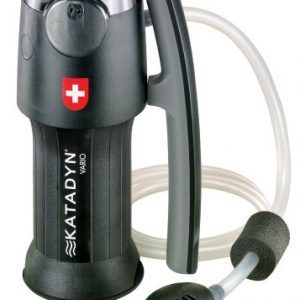
Pirates are rarely used as role models, and for good reason. They’re known for theft, murder, and all-around bad behavior, so how exactly can they be used to help you prep for a disaster? It’s not their love of rum or treasure that matters to the modern-day prepper, but rather it’s what they did with their treasure that should interest you. Pirates buried their treasure in various locations to keep it safe and allow it to hide in plain sight. By burying their treasure, they could spread their wealth across multiple locations so it was available to them wherever they were should an emergency come up.
Today you probably don’t have a treasure chest to bury, but instead you can create a survival cache for yourself and bury it for a rainy day. Don’t let the name fool you; a cache is just a group of things hidden in a secret place, and it’s these hidden stores of weapons, supplies, and sure, even a little treasure, that can get you back on your feet in a hurry after a disaster strikes.
*Prepping Like a Pirate is a 3-part series on creating and hiding your own survival cache. Each part will cover a specific topic about survival caches to get you started with building your own.

Items to Include in a Survival Cache
A survival cache is defined by what is included in it. There are different routes to take based on what you intend the cache to be used for. There are large caches that can include weeks of supplies, medium caches that include a few days of supplies, and there are small, directed caches that include a weapon, some ammo, and enough water and food to get you moving on quickly.
When talking about directed caches, these are focused on specific items, including mostly food, mostly weapons, or mostly general supplies. For example, if you have a cabin in the middle of nowhere you plan on using as a bug-out spot, you’d probably want food, water, and weapons there waiting for you. However, leaving them in the cabin is just asking for them to be stolen. Instead, you could build a few hidden caches around your property for these items to keep them safe and hidden.
General Cache – A good general cache should have everything you need to get up and moving. The only thing that will change is the amounts of the items you include to increase or decrease its size. Think of these as you would your bug-out bag. You want everything to keep you moving for at least the next 72 hours. This should include:
- Food
- Water
- Change of clothes
- Boots
- Knife
- Gun
- Ammo
- Cash or precious metals
- First aid kit
The general cache is a mixed bag of everything you need to survive.
Directed Cache – These types of caches are far more difficult to describe, as they are built with your specifics in mind. Maybe you want a weapons cache in your backyard so they’re hidden from intruders and accessible even during a large-scale emergency or house fire. Maybe you want a cache with your precious metals in it to keep them safe from the prying eyes of your neighbors or even the government. Or, maybe you want a cache of fuel hidden for you to bug out with.
Whatever the case, these are built to fit your specific needs. Just remember that it’s probably smart to include a little food and water in most caches as well as a weapon in all non-weapon caches so you have that little bit of extra help, just in case.

 Katadyn Vario Water Filter
Katadyn Vario Water Filter